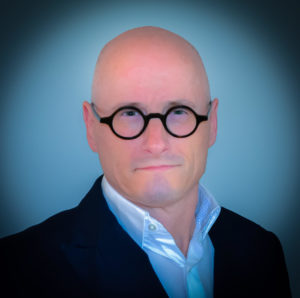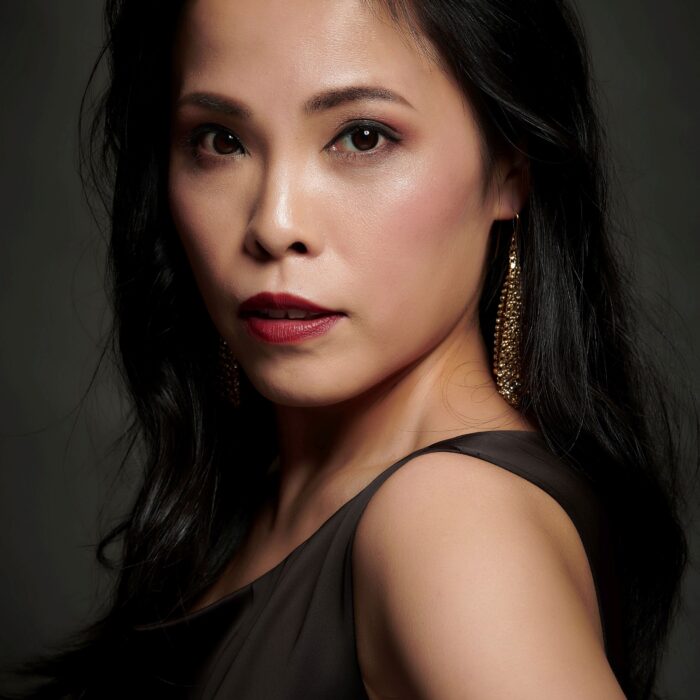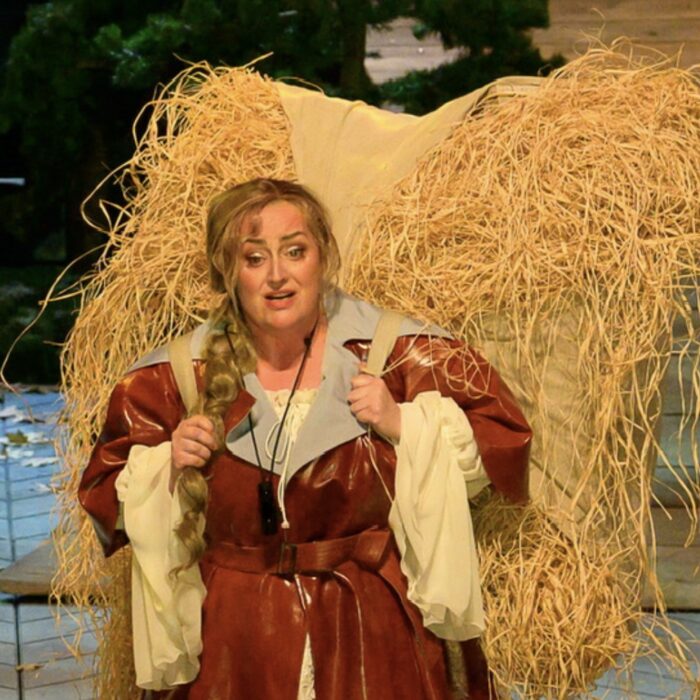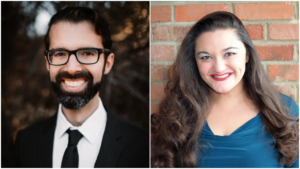
Celebrating Native American Music in Montana – Intermountain Opera Bozeman’s Interim Artistic Director Michael Sakir & Soprano Kirsten Kunkle on ‘Circle of Resilience’
By Chris Ruel(Photos: Gillian Riesen; Intermountain Opera Bozeman; Jason Dick)
Montana, where Grizzly Bear wade in chilly rivers fed by snowmelt from mountaintops and gobble up Blackspotted Cutthroat Trout. Fly-fishers do much the same but with gentle whips of line. It’s “The Treasure State,” whose motto is “Oro y Plata (Gold and Silver).” The treasure nowadays is the grandeur of the Rocky Mountains, the majesty of Yellowstone and Glacier National Park, and the seemingly endless expanses of land that buffalo, antelope, and deer call home. Critters outnumber humans; the state’s population is just over one million, spread out over 147,000 square miles. That’s just shy of seven people per square mile.
On the southern side of the state, within this idyllic territory, sits Bozeman, a city of 48,000 residents and home to Intermountain Opera Bozeman. Beginning June 16, the company will stream for free “Circle of Resilience,” a special recital celebrating traditional Native American music and contemporary compositions by living Indigenous creators, including works by Emmy Award-winning composer Jerod Impichchaachaaha’ Tate (Chickasaw) and Canadian playwright and librettist Marie Clements (Métis) The recital was filmed May 14 and 15, 2021, in front of a live audience.
OperaWire spoke with Interim Artistic Director Michael Sakir and soprano Kirsten C. Kunkle, a member of the Mvskoke Nation and co-founder of Wilmington Concert Opera, who took part in the concert, about developing the recital, the program, and the personal connection Kunkle has with the music she performed.
A Coming Together
While the “Circle of Resilience” program foregrounds music by Native people, it’s sprinkled with a few opera standards, making the recital a meeting place between Indigenous and European culture. The goal, according to Sakir, wasn’t ticket sales or audience building per se, but the demonstration of the immense and incredibly varied talents of Indigenous musicians, which will be on display to an even broader Montana audience through a partnership with Montana PBS, who filmed and edited the recital for broadcasting.
“Developing the program was a group effort. I owe so much to Tim [Long] (Artistic Advisor) and Jerod [Tate]. We wanted this to be a really varied program, with not just works by Indigenous composers but traditional opera favorites, too.”
The idea to include non-Native American music—particularly works by traditional European composers, given the history of the Indigenous people and those who came to North American shores to conquer and steal, struck me as a gray area, and I asked about it.
“This is something that comes up quite a bit when people find out that I’m Mvskoke,” Kunkle said. “I’m many things, not just Mvskoke; I’m a woman, I’m an arts administrator, and I’m a singer. I’m many cultures all rolled into one. So, whatever I may do—whether writing a libretto or singing an opera, it is inherently Mvskoke because I’m doing it; it’s part of who I am.”
Kunkle spoke of a conversation she had with Tate, in which his words left a lasting impression. “I’ve heard him say this before in interviews, and I just want to reiterate it: ‘There are as many ways to be an Indian as there are Indians in the world.'”
“It’s true you can take the heritage and the background and the culture and make it as important to you and part of your life as you want it to be,” Kunkle added, “but it doesn’t negate who you are as a person, and a lot of who I am as a person is an opera singer in the traditional classical western understanding. One thing that made this concert special was that Michael asked us to sing works that were new to us but also invited us to perform the works of Puccini or Verdi or Mozart because that’s meaningful to who we are as people. White culture must see us singing these works, and it’s important for Native people, too, because so many of us are both white and Indigenous.”
Sakir shared his thoughts on the topic.
“I was honestly skeptical of the idea of including anything by a white composer on the program, but it was Tim, Jerod, and Kirsten who said that it was great, and we should do it. That was a big learning experience for me.”
Early word of mouth helped the company learn about talented Indigenous singers like Kunkle, Shane Doyle (Crow), mezzo-soprano Katelyn Morton (Cherokee), tenor Holden Madagame (Odawa), and Grant Youngblood (Lumbee). Tate had performed in Bozeman before and connected Sakir to the artists, including Barbara McAlister, considered the “Grandmother of Opera” in Native country.
‘We were able to bring in some recorded video performances by other Indigenous singers, one of whom is Barbara McAlister, who after a long career singing at the Met, and other opera houses around the world moved back to Oklahoma and has taught on the Cherokee Nation for the last 10 years. That was special because Katelyn [Morton], one of the in-person performers, was one of her students.’
Adding to the diversity of the singers was a young Odawa transgender artist, Holden Madagame, who trained in the US as a mezzo-soprano but is now a tenor with a solid career in Germany.
‘Besides being an amazing tenor, Holden is also an activist in the transgender rights movement. On his video recording, he gave this amazing introduction to our audience about Two-Spirit, which is the native tradition of embodying both the male and the feminine.’
A Celebration of Song
As one of the foremost Indigenous composers of our time, Jerod Impichchaachaahá Tate brings cultures together through his music, including American Indian classical composition, symphonic works, ballet, and opera. The National Symphony Orchestra, Detroit Symphony, Minnesota Orchestra, and many other prominent music organizations have presented and commissioned his compositions.
‘We wanted to showcase a lot of Tate’s works,” Sakir said. “What was important to me as well was that we picked works that had immediate relevancy.’
The relevancy Sakir speaks of lives in Tate’s ‘Hózhó, (Native Strong).’ Tate based the text on the experience of an Indigenous doctor treating other Native patients as the pandemic ravaged their community.
Kunkle took on the work that asks much of the singer.
“‘Hózhó’ was hands down one of the hardest pieces I’ve ever seen in my life; it’s vocally very demanding,” Kunkle said. “It’s high in the tessitura and just keeps hammering on repeated high notes. The piece is incredibly powerful, and I can’t wait for everyone to hear it.”
According to Sakir, Kunkle blew it out of the park.
Also on the program was mezzo-soprano Katelyn Morton, who performed “North Wind,” a traditional Cherokee song sung on The Trail of Tears, and later in the program, she sang ‘Non so più,’ from “Le nozze di Figaro,” and “Mother’s Aria” from “Missing” (2017). Baritone Grant Youngblood sang a piece with words and music by Tate, “Tableaus 4, 6, & 7,” from “Standing Bear” (2015), and “Cortigianni, vil razzo dannata” from “Rigoletto,” and mezzo-soprano Barbara McAlister sang both a traditional Cherokee lullaby and Brahm’s “Wegenlied.” Aaron Beck accompanied her on piano.
Joining them were Shane Doyle, who opened the program with two traditional Northern Plains Songs, “Northern Cheyenne Honor Song” and “Chippewa-Cree Doorway Song,” and tenor Holden Madagame, who sang, “O Columbina,” from Leoncavallo’s “I Pagliacci,” accompanied by pianist Valèrie Timofeeva.
As for Kunkle, she sang two pieces that carry significant meaning.
A Singer Connects with Her Ancestor
Known as the Mvskoke Bard, Alex Posey was a poet, politician, humorist, and journalist who lived from 1873 to 1908. One of his most notable works is the “Fus Fixico Letters,” which he wrote using a fictional character who didn’t hold back his thoughts about the Mvskoke Nation, Indian Territory, and the United States’ policies toward the dissolution of tribal governments and communal lands. Alex Posey was also Kunkle’s great-great-great-uncle. Though Kunkle was originally slated to sing “Vissi d’arte,” that changed. Sakir asked her to sing two pieces—one commissioned, and the other composed by her. Each spotlighted her ancestor’s text.
“I sang a piece by a white composer with text by Posey, called ‘What I ask of life,’ by Daniel Knaggs. It was the first piece I performed on the program and one of my commissioned pieces. The work was so beautiful to sing in a setting where I could share the text of my great-great-great-uncle. Another very special part of the experience was partnering with Julia Slovarp, an amazing cellist that Michael brought in. She played slap bass for ‘Hot Gun on the Death of Yadeka Harjo,’ which I composed. I never considered myself a composer, but when I didn’t get a response from people to set the poem—which was written in Pidgin English and wasn’t about flowers and pretty things, I did it myself. It’s the only piece I know of by Posey that is in Pidgin English. I tried to share the theater of the piece, the emotion, and tell the story. Julia stepped up and figured out how to play slap bass. And Jerod gave me nothing but praise on what he thought was beautiful about it.
“It was truly a gift to bring back a piece that I never thought I’d get to perform again, and not only with an actual opera company but in a setting where all these other Native people wanted to hear something like it. Now to have it broadcast so that more people can see it makes it a gift that keeps on giving.”
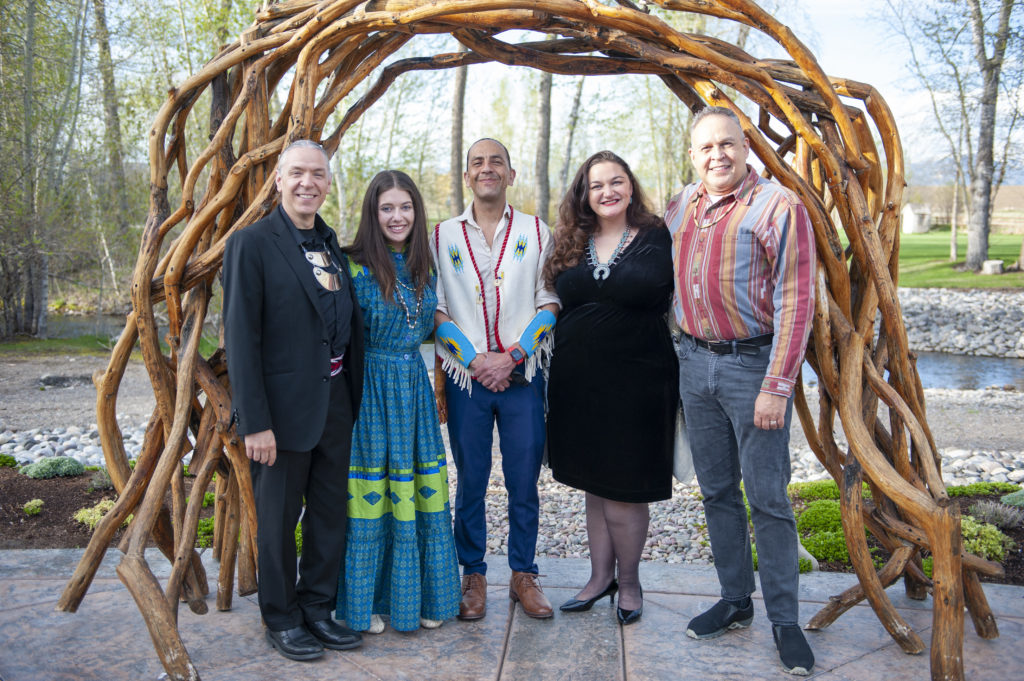
Community and Camaraderie
When I asked Sakir his biggest takeaway from presenting “Circle of Resilience,” he put his finger on the importance of community.
“The lesson for Intermountain Opera Bozeman is that programs with local relevance are the most popular ones. Both performances were at full capacity, and the only other event for which that happened was at the beginning of the season. We commissioned a requiem by a local composer, Eric Funk, called ‘Requiem for a Forest’ after a forest fire struck the Bozeman area last September. These two works got the most attention in the community. So, our lesson, and I told this to the Board, was that programming with immediacy to our community is the stuff we need to do more of. It certainly doesn’t mean we’ll stop performing favorite operas, but there’s a way to present those operas in a way that is specific to our community.”
Within the smaller community of artists performing the recital, a deep sense of camaraderie arose between performers, particularly after 15 months of isolation. Kunkle didn’t attribute the sense of friendship within the group to the fact that all involved were Native American. Instead, she chalked it up to people being authentic.
“I showed who I was to those around me in a way that made them comfortable so that we could break down any barriers and perform, collaborate, and grow together. I feel we became better people together. It was all so exciting and positive, and I think that’s what made this successful. The audience could see that and feel that positivity,” Kunkle said.
A Surprise Encore and Celebrating Yellowstone
“Circle of Resilience” ended with a surprise encore, one that Sakir related had been finalized only an hour before the show.
“There is this incredible traditional drum group called the Bear Canyon Singers, and the drumming was the perfect way for everyone at the end of the program to walk outside onto the patio and just take it all in; it was just amazing.”
On the company’s horizon lay the majesty of Yellowstone as Sakir and Intermountain Opera Bozeman look forward to the possibility of taking part in the 150th anniversary of Yellowstone National Park. Shane Doyle, a Bozeman musician, educator, and arts advocate who performed several traditional songs on the program, presented the opportunity. Doyle is also the co-artistic director with Mountain Time Arts in Bozeman, the organization working with Yellowstone National Park to celebrate its 150th-anniversary next summer.
“Already there are exciting conversations about how Shane, Mountain Time Arts, Yellowstone, and Intermountain Opera can all partner together using the same artists—Kirsten, Jerod, Katelyn, Grant—to tell Yellowstone’s history through music and song.”
Categories
Stage Spotlight